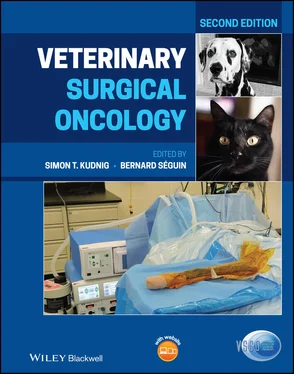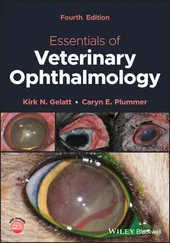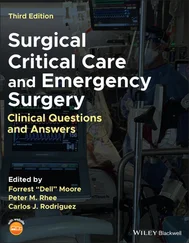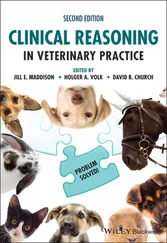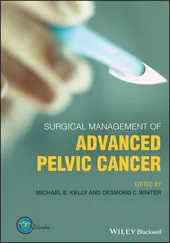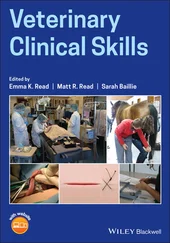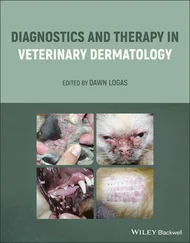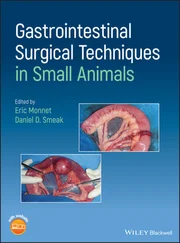Veterinary Surgical Oncology
Здесь есть возможность читать онлайн «Veterinary Surgical Oncology» — ознакомительный отрывок электронной книги совершенно бесплатно, а после прочтения отрывка купить полную версию. В некоторых случаях можно слушать аудио, скачать через торрент в формате fb2 и присутствует краткое содержание. Жанр: unrecognised, на английском языке. Описание произведения, (предисловие) а так же отзывы посетителей доступны на портале библиотеки ЛибКат.
- Название:Veterinary Surgical Oncology
- Автор:
- Жанр:
- Год:неизвестен
- ISBN:нет данных
- Рейтинг книги:5 / 5. Голосов: 1
-
Избранное:Добавить в избранное
- Отзывы:
-
Ваша оценка:
- 100
- 1
- 2
- 3
- 4
- 5
Veterinary Surgical Oncology: краткое содержание, описание и аннотация
Предлагаем к чтению аннотацию, описание, краткое содержание или предисловие (зависит от того, что написал сам автор книги «Veterinary Surgical Oncology»). Если вы не нашли необходимую информацию о книге — напишите в комментариях, мы постараемся отыскать её.
The new edition of the most comprehensive resource on surgical oncology, covering both basic and advanced surgical oncology procedures in small animals Veterinary Surgical Oncology
Veterinary Surgical Oncology
Veterinary Surgical Oncology, Second Edition
Veterinary Surgical Oncology — читать онлайн ознакомительный отрывок
Ниже представлен текст книги, разбитый по страницам. Система сохранения места последней прочитанной страницы, позволяет с удобством читать онлайн бесплатно книгу «Veterinary Surgical Oncology», без необходимости каждый раз заново искать на чём Вы остановились. Поставьте закладку, и сможете в любой момент перейти на страницу, на которой закончили чтение.
Интервал:
Закладка:
In a study of 76 cats with vaccine‐associated sarcomas, 26 cats were treated with chemotherapy in addition to surgery and radiotherapy. Neither recurrence rates, rate of metastasis, nor survival times were improved in the chemotherapy group (Cohen et al. 2001). Neoadjuvant and adjuvant chemotherapy with epirubicin (25 mg/m 2) combined with anatomical resection of FISAS resulted in local tumor recurrence in 3 cats (14%) at days 264, 664, and 1573 after surgery (Bray and Polton 2016), according to the authors these results demonstrate superior rates of tumor‐free survival and disease‐free interval when compared to historical controls.
Of 11 cats treated by stereotactic radiation for FISAS, 8 responded. The median DFI was 242 days, and an MST of 301 days (Nolan et al. 2013).
No significant effect of chemotherapy only in the treatment of FISAS in clinical settings has been reported yet, although the high metastatic rate is an indication for systemic treatment (Bregazzi et al. 2001; Cohen et al. 2001). Possibly the tyrosine kinase inhibitor, imatinib, will have an effect on FISAS. It inhibited the growth of FISAS in a murine xenograft model (Katayama et al. 2004) and could affect FISAS due to the presence of platelet derived growth factor receptor which is a receptor tyrosine kinase. In one phase 1 clinical trial of imatinib, 4/9 cases trialed had FISAS. In these four cases, a response to treatment was noted and consisted predominantly of short‐term tumor stabilization (Lachowicz et al. 2005).
In vitro doxorubicin and etoposide alone and in combination differentially alter FISAS cell viability and cycle (Hill et al. 2014).
Although masitinib did not directly enhance FISAS cell radiosensitivity under normal in vitro conditions (Turek et al. 2014), combined chemo/radiation therapy has been reported to result in a significant reduction in tumor growth compared to the respective mono‐therapies with either doxorubicin or radiation. These results support the use of the concomitant chemo/radiation therapy for adjuvant treatment of FISS, particularly in advanced or recurrent disease where surgery alone is no longer feasible (Petznek et al. 2014).
Immunotherapy has been reported successful in xenogeneic cells secreting human interleukin‐2 (IL‐2). Totally, 16 cats with FISAS were treated, two of which had local recurrence and three had metastatic disease. MST was 16 months in IL‐2 treated cats vs. 8 months for nontreated cats (Quintin‐Colonna et al. 1996).
A second study conducted with human and feline IL‐2 resulted in a lower tumor recurrence rate compared to control cats not receiving immunotherapy after surgery and iridium‐based radiotherapy (39% and 28% vs. 61% for the controls) (Jourdier et al. 2003).
Despite the recommendation for vaccine administration to be on the distal aspect of a limb to facilitate the attainment of clean surgical margins via limb amputation, a high proportion of tumors still developed in the interscapular region in a recent study evaluating the demographics of VAS. For prevention, administration of any irritating substance should be avoided. Vaccination should be performed as often as necessary, but as infrequently as possible. Nonadjuvanted, modified‐live, or recombinant vaccines should be selected in preference to adjuvanted vaccines. Injections should be given at sites at which surgery would likely lead to a complete cure; the interscapular region should generally be avoided. Postvaccination monitoring should be performed (Hartmann et al. 2015; Shaw et al. 2009). However, these current feline vaccine site recommendations may not be appropriate for cat owners as was concluded by Carwardine et al. (2014) based on an anonymous internet‐based cross‐sectional study in the UK wherein cat owning respondents would not allow amputation of their cats’ forelimb (20%), hindlimb (15%), or tail (15%).
References
1 Aitken, M.L. and A.K. Patnaik. 2000. Comparison of needle‐core (Trucut) biopsy and surgical biopsy for the diagnosis of cutaneous and subcutaneous masses: A prospective study of 51 cases (November 1997–August 1998). J Am Anim Hosp Assoc 36(2):153–157.
2 Alberdein, D., J.S. Munday, C.B. Dyer, et al. 2007. Comparison of the histology and immunohistochemistry of vaccination‐site and non‐vaccination‐site sarcomas from cats in New Zealand. N Z Vet J 55(5):203–207.
3 al‐Sarraf, R., G.N. Mauldin, A.K. Patnaik, et al. 1996. A prospective study of radiation therapy for the treatment of grade 2 mast cell tumors in 32 dogs. J Vet Intern Med 10(6):376–378.
4 Alvarez, E., J. Dreyfus, T. Carlson, et al. 2017. Well‐differentiated inflammatory liposarcoma with metastasis in a 6‐y‐old cat. J Vet Diagn Invest 29(6):896–899.
5 Anderson, G.M., A. Dallaire, L.M Miller, et al. 1999. Peripheral nerve sheath tumor of the diaphragm with osseous differentiation in a one‐year‐old dog. J Am Anim Hosp Assoc 35(4):319–322.
6 Aper, R. and D. Smeak. 2003. Complications and outcome after thoracodorsal axial pattern flap reconstruction of forelimb skin defects in 10 dogs, 1989–2001. Vet Surg 32(4):378–384.
7 Avallone, G., P. Helmbold, M. Caniatti, et al. 2007. The spectrum of canine cutaneous perivascular wall tumors: Morphologic, phenotypic and clinical characterization. Vet Pathol 44(5):607–620.
8 Avallone G., P. Boracchi, D. Stefanello, et al. 2014. Canine perivascular wall tumors: High prognostic impact of site, depth, and completeness of margins. Vet Pathol 51(4):713–721.
9 Avallone, G., D. Stefanello, P. Boracchi, et al. 2015. Growth factors and COX2 expression in canine perivascular wall tumors. Vet Pathol 52(6):1034–1040.
10 Bacon, N.J., W.S. Dernell, N. Ehrhart, et al. 2007. Evaluation of primary re‐excision after recent inadequate resection of soft tissue sarcomas in dogs: 41 cases (1999–2004). J Am Vet Med Assoc 230(4):548–554.
11 Bae, S., M. Milovancev, C. Bartels, et al. 2020. Histologically low‐grade, yet biologically high‐grade, canine cutaneous mast cell tumours: A systematic review and meta‐analysis of individual participant data. Vet Comp Oncol 18(4):580–589.
12 Baez, J.L., M.J. Hendrick, F.S. Shofer, et al. 2004. Liposarcomas in dogs: 56 cases (1989–2000). J Am Vet Med Assoc 224(6):887–891.
13 Baginski, H., G. Davis, and R.P. Bastian. 2014. The prognostic value of lymph node metastasis with grade 2 MCTs in dogs: 55 cases (2001–2010). J Am Anim Hosp Assoc 50(2):89–95.
14 Bagley, R.S., S.J. Wheeler, L. Klopp, et al. 1998. Clinical features of trigeminal nerve‐sheath tumor in 10 dogs. J Am Anim Hosp Assoc 34(1):19–25.
15 Baker‐Gabb, M., G.B. Hunt, and M.P. France. 2003. Soft tissue sarcomas and mast cell tumors in dogs: Clinical behaviour and response to surgery. Aust Vet J 81(12):732–738.
16 Bailey, D.B., K.M. Rassnick, O. Kristal, et al. 2008. Phase I dose escalation of single‐agent vinblastine in dogs. J Vet Intern Med 22(6):1397–1402.
17 Baldi, A. and E.P. Spugnini. 2006. Thoracic haemangiopericytoma in a cat. Vet Rec 159(18):598–600.
18 Banerji, N. and S. Kanjilal. 2006. Somatic alterations of the p53 tumor suppressor gene in vaccine‐associated feline sarcoma. Am J Vet Res 67(10):1766–1772.
19 Barbur, L.A., K.D. Coleman, C.W. Schmiedt, et al. 2015. Description of the anatomy, surgical technique, and outcome of hemipelvectomy in 4 dogs and 5 cats. Vet Surg 44(5):613–626.
20 Barrett, L.E., K. Skorupski, D.C. Brown, et al. 2018. Outcome following treatment of feline gastrointestinal mast cell tumours. Vet Comp Oncol 16:188–193.
21 Dewitt, S.B., W.C. Eward, C.A. Eward, et al. 2016. A novel imaging system distinguishes neoplastic from normal tissue during resection of soft tissue sarcomas and mast cell tumors in dogs. Vet Surg 45:715–722.
Читать дальшеИнтервал:
Закладка:
Похожие книги на «Veterinary Surgical Oncology»
Представляем Вашему вниманию похожие книги на «Veterinary Surgical Oncology» списком для выбора. Мы отобрали схожую по названию и смыслу литературу в надежде предоставить читателям больше вариантов отыскать новые, интересные, ещё непрочитанные произведения.
Обсуждение, отзывы о книге «Veterinary Surgical Oncology» и просто собственные мнения читателей. Оставьте ваши комментарии, напишите, что Вы думаете о произведении, его смысле или главных героях. Укажите что конкретно понравилось, а что нет, и почему Вы так считаете.
